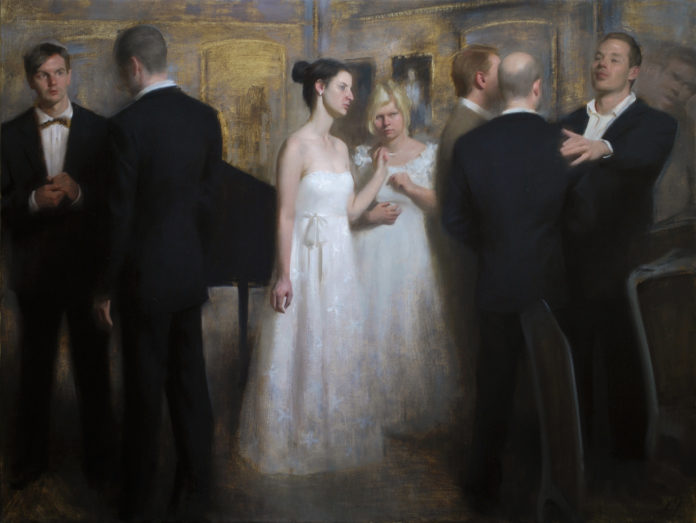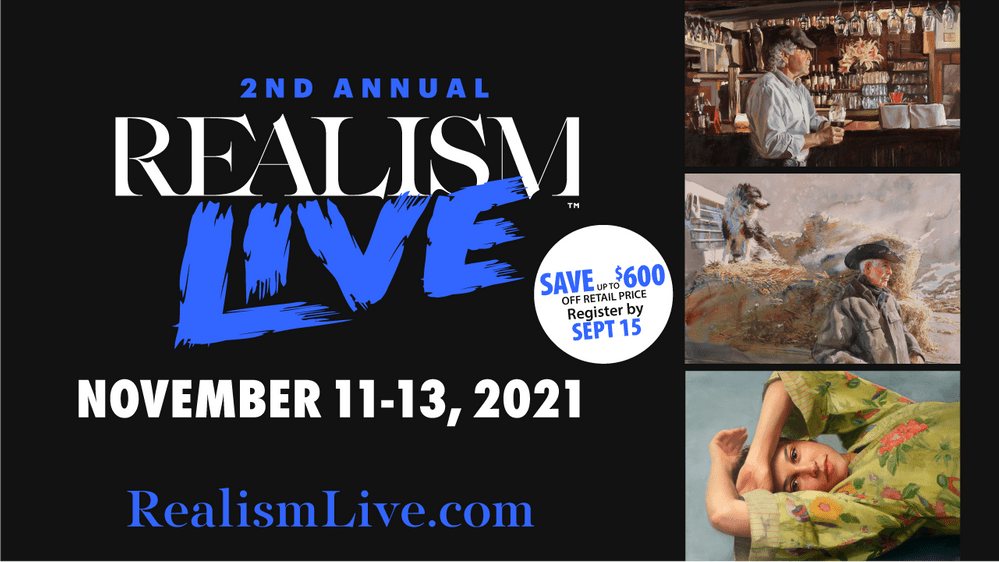Painting Figurative Art > Copying what you see is the daily task of every atelier student. But what happens when this skill is acquired?
BY NICK ALM
Walking through museums and looking at the paintings of spectacular scenes often raises the question: “How was it done?” Did the artist have five racehorses with an ancient palace in his studio? Not likely. Further questions might be: Did the model actually have such a graceful body? Were people those days walking around glowing like angels?
A fellow painter once told me about one of his museum experiences. While he was admiring Rembrandt, other visitors were passing by in front of him, and suddenly he realized that the skin of the painted figures was more lifelike than that of the living people next to them. No matter how anemic these people might have been, it’s pretty impressive for something painted in oil 350 years ago to outshine them in this comparison.
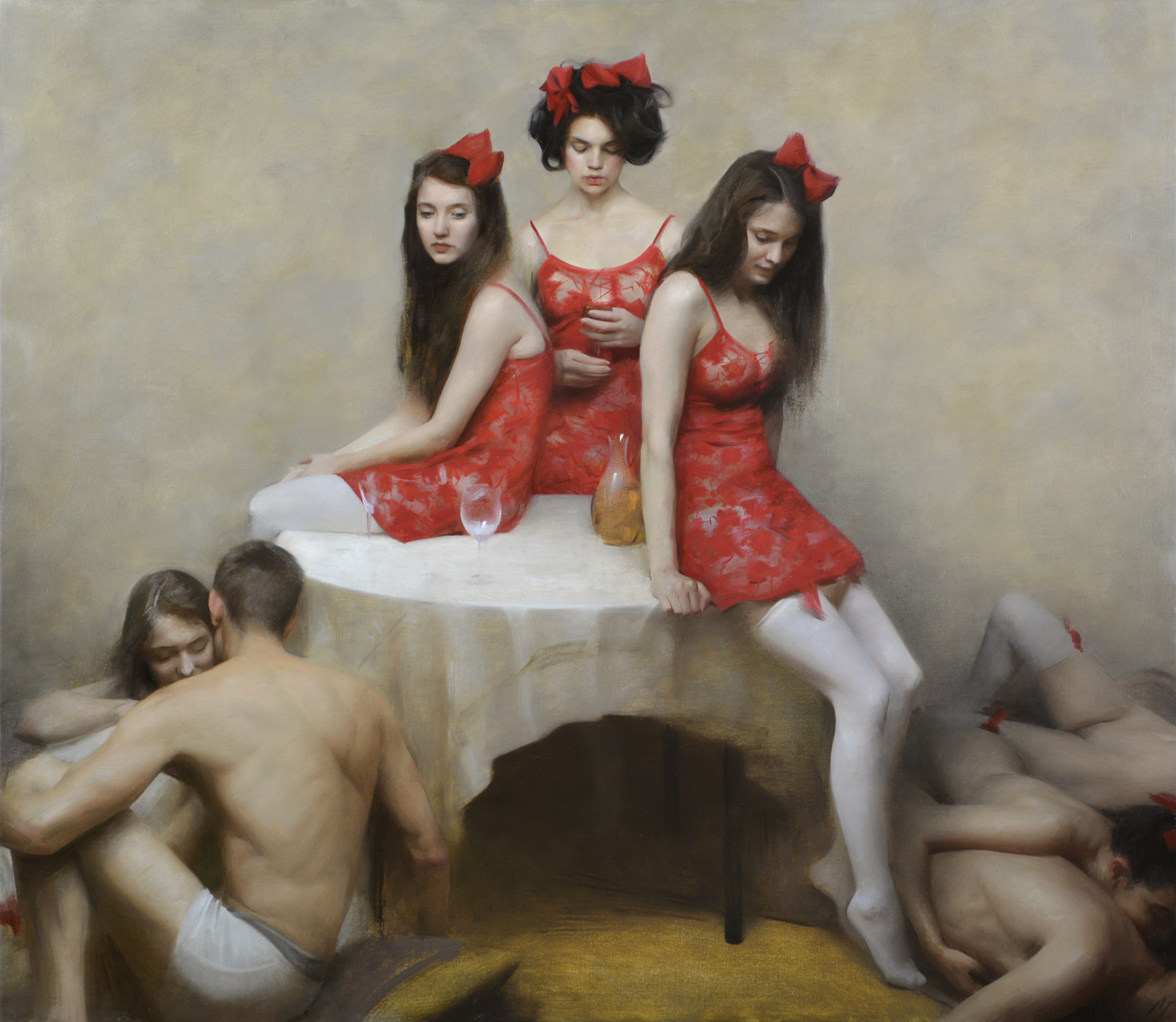
I find that the most successful paintings never look exactly like the painted subject. In fact, nature can be quite crude. Having the subject in front of you is obviously a benefit if you want to achieve a realistic result, but to go beyond that, you´ll have to be inventive.
Before the realist movement in the nineteenth century, artists were idealizing to a greater extent, often with an inhuman, generalized result. But their use of color formulas often resulted in a beautiful and harmonic color scheme. It also facilitated more complicated subject matter, since the complex spectrum of nature was disregarded. Something is gained in this lack of “hard core” realism.
Realism tends to bring things down to earth, while an idealistic approach will do the opposite. The ratio of these two applications varies a lot in the work of many painters. Comparing commissioned portraits with personal choices of subject matter will often show their register. I myself like to pendulate on the scale depending on the painting’s demands. However, it might not be obvious to the spectator, but it is surely felt.
A constant problem that I have to deal with is finding the right model for a specific figure. Combining parts from different models can therefore be a solution that I have come to do a lot.
Just because a model’s face is great doesn’t mean you have to stick with that 80s’ haircut.
The feature that I most commonly like to change is the skin, which is a great way to achieve overall harmony, a real perspective, focus, etc. Head sizes are another factor to play around with, since a reduction of the head size will give the figure a more grand appearance. Just look at Sargent. Having this mindset at hand is great for strengthening the compositional and psychological impact.
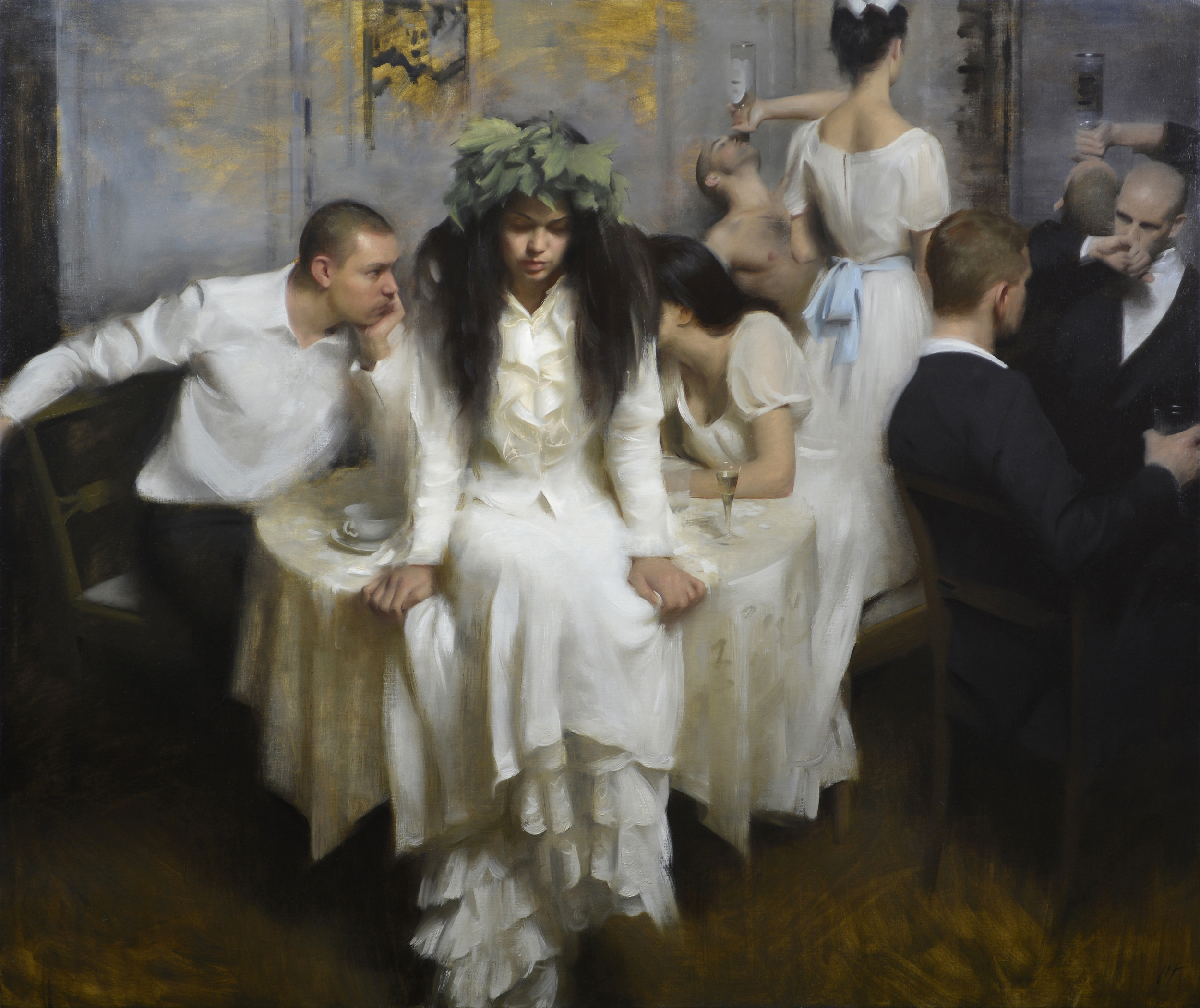
Accuracy is not crucial in making a piece of art. Rembrandt’s drawing was all over the place, but the artistic and psychological note was often right spot on. On the other hand, a painting of extreme accuracy will often lack something vital. Personally I could never leave too-obvious errors in my own paintings, but it’s unnecessary being too picky about it. That other mysterious quality is the factor which will decide its value.
With a free approach something might occur in the painting that is either intentional or beyond your intentions, which adds a new dimension to the picture. These effects, logical or illogical, big or small, spark the creative associations on a level beyond the conscious. This hopelessness in explaining the experience gives life and mystery to the artwork.
A common analogy you hear is that of learning the scales to enhance your music. The more tools you have, the better off you’ll be with your creativity. But you will most likely not get all the tools you need in the present ateliers. The focus on learning to copy what you see is indeed important, but some students who are trained in this manner have a tendency to become slaves to nature—they will continue to play scales without making music.
During my student years, while working on personal projects, I occasionally caught myself just painting what was in front of me, deviating from my own personal view. Somewhere along the way, distracted by time pressure, etc., I had lost focus. Since then I’ve become better about never letting go of the initial emotion that made me choose the subject in the first place, and my work has gained more in character because of this.
Memory is your artistic storage, which I’m trying to use to a great extent. Consciously or not, it should kick in, giving you a lot of artistic possibilities during the process. Giving this resource some private attention can be favorable to your creative freedom. It will enable you to use nature as a raw material instead of as an answer. By doing that you’ll also be more free in terms of design.
Training the memory will deepen your understanding of nature, which is crucial in sketching from imagination. I find this initial stage very important, since it will enable you to draw scenes that nature can’t offer, and it often shows through in the finished painting, giving it a certain imaginary look.
One result of all these personal voices out there is their impact on your perception. All of a sudden you are able to see beauty in daily life that you couldn’t see before. A place already visited several times might, after such an experience, have a new meaning and be loaded with artistic potential.
I’ve failed and discarded many canvases in my attempts at improving nature. But playing it safe is not very developing for your art. When you finally hit the right notes, your work will sing on another level.
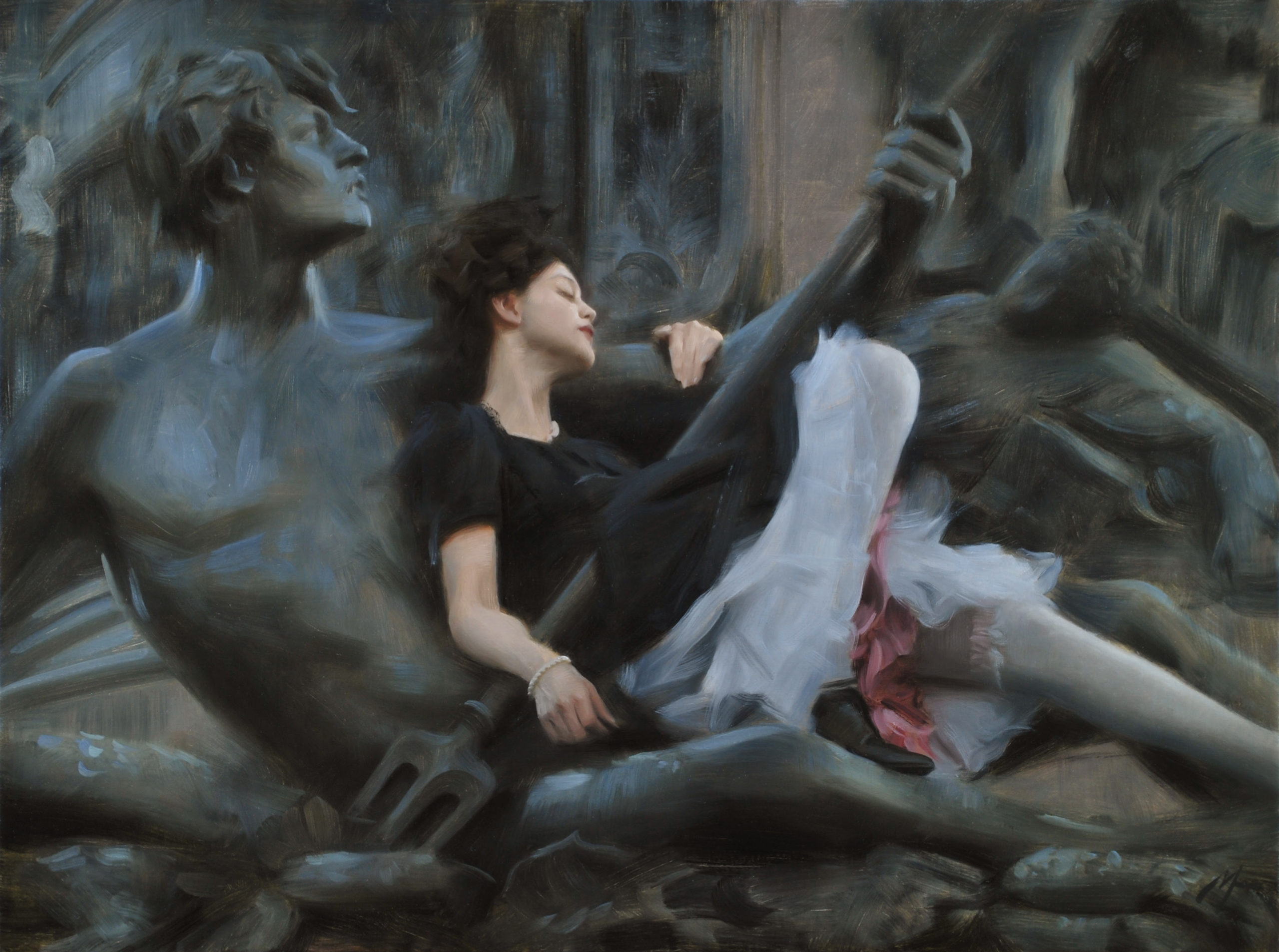
Learn more about Nick Alm at: www.nickalm.com.
Browse more articles on contemporary figurative art here at RealismToday.com.
Visit EricRhoads.com (Publisher of Realism Today) to learn about opportunities for artists and art collectors, including:
- Art retreats
- International art trips
- Art conventions, including the Figurative Art Convention & Expo
- Still Life, Figurative Art workshops and more (in person and online)
- And more!


